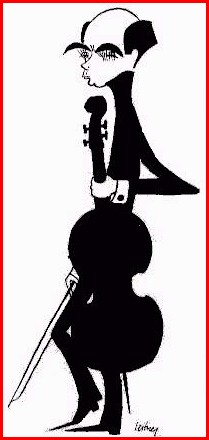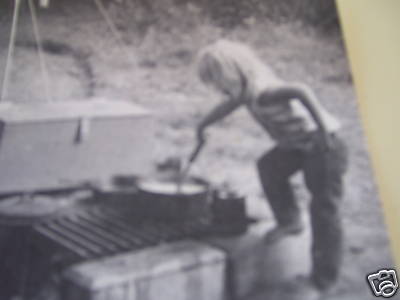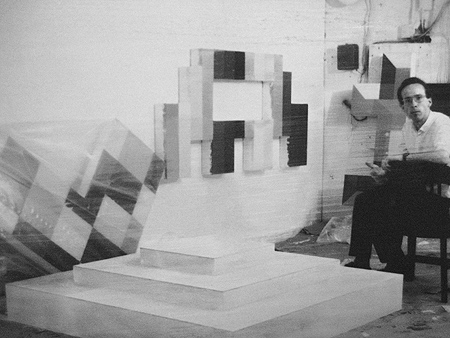Schwarz
View current page
...more recent posts
rip sky saxon 1949-2009 but thats under dispute and besides age is irrelevant
ham radio
via things
For the moment, at least, Times Square is once again a spectacularly crazy place—crazy enough on a recent afternoon to make a seasoned police officer shake his head with a bemused grin and mutter, “Just when you thought you’d seen everything …” People were sitting on lawn chairs in the middle of Broadway. If, as the anthropologist Mary Douglas asserted, dirt is matter out of place, then this crowd of pedestrians occupying vehicular lanes represented an invigorating sort of filth, a thrilling overthrow of order.
So far, this revolution is thrown together with nothing but orange cones and cheap patio furniture. The fearless Transportation commissioner, Janette Sadik-Khan, decided that it’s better to take back turf for foot traffic first and worry about piazza-tizing it later. The absence of design results in a triumph of urbanism. Suddenly, the power relationship between people in and out of cars has changed. Now drivers pass through the area at the sufferance of pedestrians, rather than the other way around. Cars don’t honk as they nose crankily into a crosswalk; they wait politely to cross the new mall, giving drivers a moment to reflect on the wisdom of taking a different route.
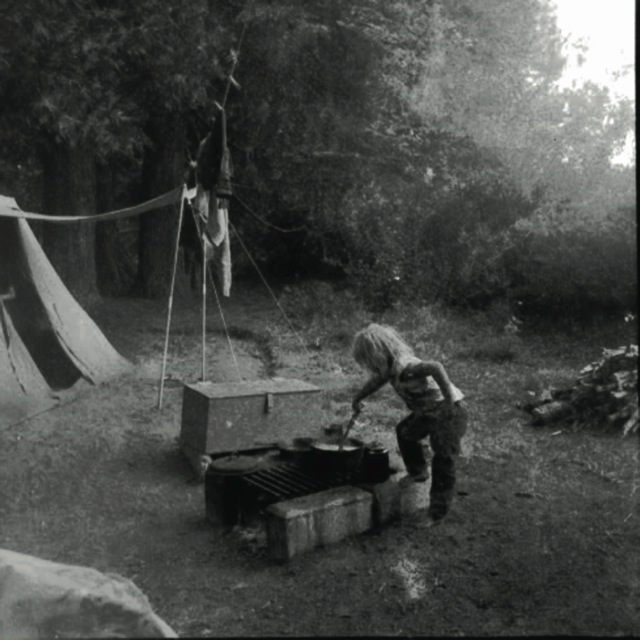
take a giant step
rip rainbow room
I beg you do not forget playfulness. – Alvar Aalto
The Finnish approach to architecture is a sobering yet exhilarating antidote to a world gone mad for excessive and absurdly expensive design. Aalto fit his buildings to the scale of the human body and the natural world around them. Budget-restricted architects trying to breathe inspired life into their work need only to study the great Finnish master. Instead of travertine, he created stairs of brick or wood. For the graceful, big curve of his Helsinki studio space, first completed in 1955, he used insulation paper because of its interesting ribbed pattern, then applied thin, vertical ribs of wood and painted it all white. Inexpensive, and stunning. The studio now houses the Alvar Aalto Foundation, which organizes the International Alvar Aalto Symposium that takes place in the city of Jyvaskyla every three years.
Aalto devoted much of his energy to capturing natural light, cutting rows of round skylights in lobbies or cafeterias. In universities and the compelling National Pensions Institute in downtown Helsinki, he used thick structural columns with vertical rows of curved ceramic piping. Aalto was playing, albeit seriously, all the time.
Harry and Maire Gullichsen were among the wealthiest people in Finland when they commissioned Aalto to design their Villa Mairea during the Depression, but there are rattan mats on the floors rather than Persian carpets. There are flagstones on the ground and columns resting on small boulders at the front entrance. I am amazed by balustrades and arbours made of spruce saplings. In a home filled with Picassos and Fernand Legers and Alexander Calders, there are bookcases on the study walls made of birch plywood – nothing fancy, just engaging and warm.
Wood Stove Sizing
One measure of a stove's size is its heat output measured in BTUs. Various wood stoves
have ratings of 35,000 to over 100,000 BTUs. The BTU rating of the wood stove you buy
should be sized to the number of square feet you're heating.
A rule of thumb for figuring this out is 35 BTUs for every square foot of heated space. For
example: A 1,200 sq. ft. ranch would require a stove rated around 42,000 BTUs.
(35 x 1,200 = 42,000)
If your home has more than one story, plan on heating only the floor where the stove is
located. Although heat rises, it doesn't rise fast enough to comfortably heat upstairs
bedrooms and the bath. Consider supplementing the heat in these rooms with small
space heaters.
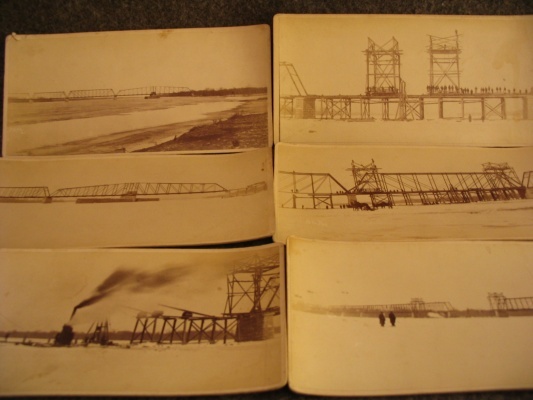
6 Photographs of the Keithsburg Railroad Bridge under Construction in 1886. Each measures 8.25'' by 4''. Angled upward at ends.
asphalt spot
endangered: new englands 3 decker homes
I've just finished reading Peter Blecha's new book Sonic Boom, The History of Northwest Rock, from "Louie Louie" to "Smells Like Teen Spirit" and I'm jonesing to dig through my attic to find all my old "Garage Punk Unknowns", "Back From The Grave", "Teenage Shutdowns" and other similar comps. The book, which focuses almost entirely on the inception of rock through the mid 60s, does a great job of describing the complicated scene that brought about greats like The Sonics (whose incredible first record, Boom, is the source of the book title), The Wailers, The Ventures, Paul Revere and the Raiders and, most famously, the Kingsmen. And, perfect for FMU fans, all of the obscure, short lived bands and the hits that never were are documented in passionate detail.
Peter Blecha attacks history from numerous angles. He covers the racial impact of rock and roll. He's got insider information on the publicists and marketers who made the deals that made the hits. He's got behind the scene anecdotes from the bands. For instance, in one of many sections on the Kingsmen's famous recording of "Louie, Louie", Blecha reveals that during the first take, the band's manager physically forced the recording engineer out of the studio. During the second and final take, The Kingsmen did not even know that they were recording a final take, they just thought they were running through the song for practice. And after hearing the playback, which The Kingsmen thought was absolute crap, the manager demanded that the band pay studio fees - when the band couldn't pay, one of their moms fronted the fifty bucks! A good investment on her part, I must say.
Sadly, the wisdom of these two works has not rubbed off on the rebuilding of the World Trade Center site in New York. There, more than seven years after the Twin Towers were destroyed, the public and private bodies involved in the site are still wrangling over fundamental aspects of the reconstruction. Two of the mighty towers planned for the site are in danger of being shrunk to a mere 25 storeys. The astoundingly expensive National September 11 Memorial & Museum has had its projected completion put back so that it is now due to be finished, just in time for the tenth anniversary of 9/11, in 2011.
The Freedom Tower, the emblem of the rebuilding, is now rising towards its symbolically significant height of 1,776 feet (to recall the year of independence), and it is due for completion in 2014, but it has lost its resonant name. It was recently announced that it would be called One World Trade Center for marketing reasons. 'We will ensure that the building is presented in the best possible way,' said the chairman of the Port Authority, which is building it, evidently believing that commercial tenants would rather not rent space in a symbol. The news has provoked outrage: 'Freedom is out of fashion at Ground Zero,' said the New York Post.
The reconstruction of Ground Zero,in other words,once intended as a defiant riposte to terrorists, as a demonstration of the invincible might of American freedom, has turned into something else. It is now a demonstration of the baroque manoeuvres in which New York specialises when it comes to large-scale construction schemes. It shows what can happen when political, commercial and architectural egos tangle.
gillians found photos #16 : 4x 3rd row pov murry the k show at the brooklyn fox theater featuring the shangralas
The office of Harley Earl, X-Vice President of Design at General Motors
via vz
skateboard scraps make a sculptural seat
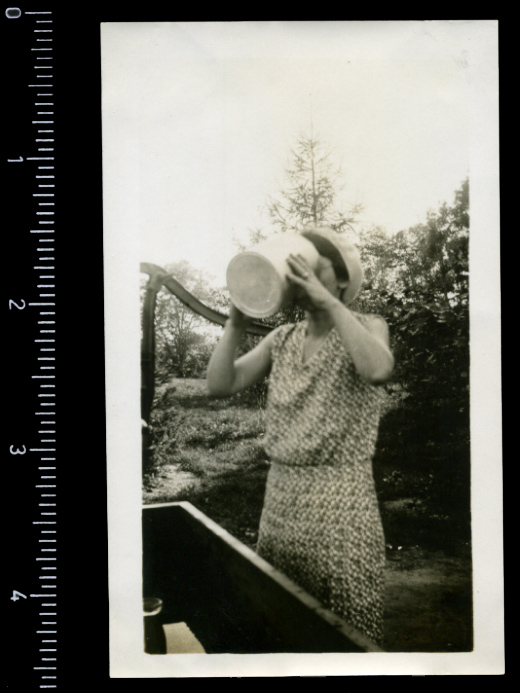
old seedy gotham
Soon after the fatal train collision that killed engineer John Luther Jones (he was nicknamed “Casey” because he was from the town of “Cayce”, Kentucky) on april 30, 1900, heroic tales of his death started to be told across the South. When he was living, Jones already had a growing reputation among railroad folks for his trademark whistle (every engineer at this time could make his own whistle) and for his aptitude at being always on time. After his death, he became a real heroic figure and the song about him helped to carry his memory over the years. Like “Frankie and Albert” , the story of the Casey Jones ballad goes back and forth between the folk and popular music worlds. It originally started with Wallace Saunders, a black engine wiper who worked on a railroad shop in Canton. Saunders was known for his ability to make songs about people and singing or whistling them as he was working. The song he made up about Casey Jones, derived from an older african-american “Blues ballad” called “Jimmy Jones”. It had a very catchy tune and people along the railroad line started to sing it. Illinois Central Engineer William Leighton loved the song so much that he told about it to his two brothers Frank and Bert, who were vaudeville performers. The Leighton brothers re-arranged the song with a chorus they added and sang it in theatres around the country. Finally two other vaudeville performers Lawrence Seibert, singer and Eddie Newton, composer, took the credit for the song and published it in 1909 under the title “Casey Jones , the brave engineer”. From then it became a very popular piece and althought it described a tragedy, the song had a humorous feel and a catchy melody that pleased everyone. Recordings were made of the “vaudeville” Casey Jones” and this version enterred as well the oral folk tradition where it could be mixed with older songs. Many parodies and other songs were also made, using the “Casey Jones” melody.from old weird america a french tribute blog dedicated to harry smith and his musical anthology
second homes for leisure living
via justin
the da vinci detective on smithsonian channel
ldv art watch
“Take Ivy” has always been extremely rare in the United States, a treasure of fashion insiders that can fetch more than $1,000 on eBay and in vintage-book stores. But scanned images from the book have been turning up online in recent months. Ricocheting around the network of sartorially obsessed Web sites and blogs (like acontinuouslean.com and thetrad .blogspot.com), it has aroused renewed interest for its apparent prescience of preppy style. (In the United States, the word preppy came into popular use only in 1970, thanks to the best-selling book and top-grossing movie “Love Story”; and the full flowering of preppy style would not arrive until 1980 with the best-selling “Official Preppy Handbook.”)
But “Take Ivy” was not prescient; it was totally timely, having been commissioned by Kensuke Ishizu, who was the founder of Van Jacket, an Ivy Leagueobsessed clothing line that was a sensation among Japanese teenagers and young men in the early 1960s. Mr. Ishizu was a kind of Ralph Lauren avant la lettre.
“You could have called it a Van look,” recalled Daiki Suzuki, the designer and founder of Engineered Garments (channeling vintage workwear) and the designer of the revamped Woolrich Woolen Mills line (channeling 1950s New England). He remembers “Take Ivy” from his childhood in Japan and how the Ivy look, as it is generally called there, became basic in the ’70s and ’80s, as the craze for American things like Levi’s and Red Wing boots accelerated. In 1989, Mr. Suzuki moved to the United States to work for a large Japanese store scouting for new American designers and obscure brands to import, like White’s Boots from Washington, Russell Moccasin from Wisconsin and Duluth Pack backpacks from Minnesota.
So called "carpet cloaks" are the first technology to succeed in hiding objects by deflecting light across a range of wavelengths. Two groups described different cloaks last week at the International Quantum Electronics Conference in Baltimore, Maryland.
Invisibility cloaks work by deflecting light waves so the light that reaches the eye shows no trace of the hidden object. Conventional optical materials can't do this, but a dozen years ago John Pendry of Imperial College London showed it was possible to bend light around objects by building materials made of components smaller than the wavelength of the light.
dock fittings
plumbing pipe hand rail
Richard Rogers, the architect who was sacked last week from a multibillion pound development in London after Prince Charles complained about his designs, has accused the prince of "an abuse of power" and "unconstitutional" behaviour.
Speaking for the first time since the Qatari royal family abandoned his plans to build 552 new homes on the site of Chelsea barracks, Rogers called for a national inquiry into whether the prince has a constitutional right to become involved in matters such as planning applications which have economic, political and social ramifications.
The 75-year old Labour peer claimed the prince "single-handedly destroyed the project" and attacked him for using his influence behind closed doors to persuade the Qatari royal family, which owns the site, to drop his scheme. He said by interfering in the democratic planning process, the prince had broken "a bond of trust" with the British public.
beasts at the border
via the rumpus
-the hound
Billy Wright was a purveyor of the style of rhythm and blues that reached it's ultimate crystallization with the rise to stardom of Little Richard via the earth shattering sides issued by Specialty starting with Tutti Frutti 1955. Wright was gay and flamboyant, he had worked the tent shows in drag, a great southern, show biz tradition in itself and an important influence on rock'n'roll--hence the term "tent show queen". He sang the repertoire of said tradition, many of the same tunes Little Richard would clean up and take to the bank-- Tutti Frutti ( original lyrics-- "Tutti Frutti/Good bootie/if it don't fit/don't force it/just grease it/make it easy"), Busy Bootin' aka Keep A Knockin', Don't You Want A Man Like Me, etc. Other well known recording artists that came out what was a true underground movement of it's time included Frankie "Half Pint" Jackson, who recorded with Tampa Red in the 1930's, Esquerita, who taught Little Richard his piano style, Larry Darnell, and of course Little Richard, himself a protege of Billy Wright's back in Atlanta at the start of his career. A career that began with Richard performing in drag, balancing a chair on his chin while he sang.
Billy Wright is mostly forgotten today, if he's remembered at all it's because of his influence on Little Richard who has never been shy about recognizing Wright's importance, but in the years 1949-51 he had four top ten R&B hits, he was a good draw in nearly every city with a significant black population, and was a sizable star in his hometown of Atlanta.
teddy boys
The web site of Branislav Kropilak now features larger scale images of the beautiful parking garages series, and the stunning billboards series of photographs.
via things mag and yeah thats how they talk over there
It's always a little risky to see in one headline about the architecture business, or in the fate of a single firm, a parable for the profession as a whole. But news that the prefab specialist Michelle Kaufmann has suddenly closed her Oakland office and laid off all 17 of her employees does seem to have Larger Symbolism written all over it.
Kaufmann's is hardly the only prefab firm to face trouble in recent months. Empyrean International, the company that built houses for Dwell magazine's prefab arm, abruptly shut down last fall. Marmol Radziner, the Los Angeles firm known for smartly designed Neomodern houses, has mothballed its prefab factory in Vernon in what it says is a temporary move.
It took just one-and-a-half days for eight workers to build the frame from 11› tons of steel. The walls were made from prefabricated panels, and the windows were of a type usually used in factories. The staircase was ordered from a marine supplies catalog. The cost? Just $1 per square foot.
That was back in 1949, and the bill didn’t include the labor of the owners, who’d designed the house, or their employees. Even so, $1 was remarkably cheap, especially when compared with the $11.50 it then cost to build a square foot — that’s roughly a tenth of a square meter — of a typical American home. It seems even cheaper if you consider that the end result was occupied by its owner-designers, Charles and Ray Eames, for nearly 40 years. The Eameses went on to become America’s most famous industrial designers, and their new home was to be one of the most influential — and beloved — houses of the 20th century.
rago and perrault home
bau-bike
via justin
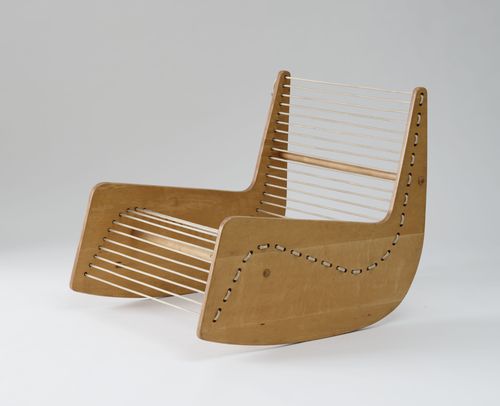
alexey brodivitch - floor chair (model 1211-c)
what was good design? at moma
loud fast jews
another cool buildings list. this one compiled for short list dot com by chris wilkinson, who designed gateshead millennium bridge
Architects who see one of their buildings demolished in their own lifetime can now seek solace in a new online support group.conversely, shouldnt there be the same for artist members of passe movements?
The Rubble Club has been set up to highlight the number of buildings being torn down, as it believes, unnecessarily.
Members so far include Reiach & Hall, who designed the Forth Road Bridge toll booths, and Steven Anderson, part of the design team behind the Chungwha factory in Lanarkshire, which was built for £10m in 1996 and pulled down within a decade.
To qualify for membership, architects must be alive and not party to the destruction of the building in question. The building must have been intended as a permanent structure and its destruction must have been deliberate.
wheres my cell phone dot com
via dave
the order of myths
via vz
museum of british folklore
via things mag
hobo's bindle
beggerman's rigadoo
house in kamakura japan by suppose design office
justin found this one
vertical farm concept
vito acconci closing design studio
the secret science club at bell house bkln
via vz
The three Charles Ray installations at Matthew Marks right now, all brilliant examples of post-minimalist/conceptual sculpture, each created in the late eighties and new to New York, rattled my perceptions, jangled my faculties, and made me go “Wow!” They exemplify a drug-addled view of the world. Ray’s sculptures, part of a long tradition of minimal installations, are also forerunners to much of the theatrical Festivalism of recent times (e.g., Maurizio Cattelan and Olafur Eliasson). Each piece is nearly invisible and formally economical. Yet each is outrageously labor-intensive. Ink Line, the best and showiest of the three works, is a sculpture/drawing/fountain consisting of a stream of jet-black ink pouring from a dime-size hole in the ceiling into a dime-size hole in the floor. Initially Ink Line looks like a strand of yarn strung the height of the gallery, a pulsating Fred Sandback sculpture, a free-floating Barnett Newman zip, or a disembodied Sol LeWitt. Get close and you’ll realize the line is liquid, glimmering, the consistency of syrup, moving fairly fast, fluctuating slightly, and thinner at the bottom than at the top. The ink forms a weird climatological aura around itself, slightly changing the humidity of the room. I was blown away when I was allowed to see the elaborate apparatus that makes this simple effect possible. There was a large, noisy electric motor in the showroom beneath this gallery, all sorts of wiring, and plastic tubes that go under the floor, behind the wall, and above the ceiling. A gallery assistant arrives two hours early each day to drain the ink, “de-gas” it (!?), heat it with lamps to between 90 and 95 degrees, and put it back into the system. Anyone who looks at Ink Line can figure out how it works—yet the piece is as much a phenomenological event and a mystery as it is a work of formalist sculpture.good examples of "plug-in" art. (art requiring a power cord.)
high line
jean baudrillard rock star
János Starker is one of the 20th century's greatest cellists. Hungarian born, Starker was a child prodigy touring Europe and the United States by the time he was 12 years old. Starker is a perfectionist and his tireless practice sessions are legendary. The man is a genius with his instrument. His technique is brilliant and his playing passionate.thx edo
These sessions were recorded in New York in the 1950's for the small label, Period. With no producer on hand, the musicians and engineers collaborated on the sound and mic placement. Starker himself helped in the editing process taking a razor blade to the session tapes. I guess that shows what can be done when you take the marketing people out of the creative process. As LP's these recordings were among those most prized by collectors. Sadly, they have been out of print for over 35 years. This is the first time they are available on CD.
This set is marvelous for its diversity, ranging from Boccherini and Mozart to Bartok and Kodaly is amazing.
I have to say that I usually dislike Bartok, but in Starker's hands Bartok becomes fascinating. If a musician can do that with Bartok, imagine how well the Mozart sounds!
We know the technique; but what’s the source of straw man? A poet in the 18th century responded to critical judgment with “Critics, who like the scarecrows stand/upon the poet’s common land.” The best guess about the trope’s origin is the farmer’s scarecrow — an old coat and hat set up on a pole and stuffed with straw to resemble a human sentry and frighten hungry blackbirds away from vegetable seedlings.
Though it appeared in a somewhat sexist 17th-century English saying — “A man of straw is worth a woman of gold” — in U.S. politics it was made famous in 1912 by President William Howard Taft, who had been set in place by the retiring Theodore Roosevelt four years earlier but who was being savaged by Teddy’s campaign to get his old job back: “I was a man of straw; but I have been a man of straw long enough. Every man who has blood in his body, and who has been misrepresented as I have . . . is forced to fight.” Taft won renomination, but Roosevelt ran as a “Bull Moose” independent, splitting Republicans and helping elect Woodrow Wilson, the Democrat.
Early in the 2008 primary season, The New York Post — not inclined to support most Democrats — surprised readers with the front-page headline “Post Endorses Obama.” David Carr, media reporter for The Times, asked rhetorically, “Why did The Post kick Senator Clinton to the curb?” While noting that the relationship between Rupert Murdoch of The Post and the Clintons was complicated, he wrote that the endorsement “invited suggestions that Mr. Murdoch was using The New York Post to set up a straw man for the Republicans to mow down in the fall.”
The noun phrase straw man, now used as a compound adjective as in “straw-man device, technique or issue,” was popularized in American culture by “The Wizard of Oz.” Dorothy (played by Judy Garland in the 1939 movie), backed up by the Tin Man (Jack Haley) and the Scarecrow (Ray Bolger), slaps the paw of the Cowardly Lion (Bert Lahr) for frightening her dog Toto and says, “It’s bad enough picking on a straw man, but when you go around picking on poor little dogs. . . .” The meaning is clear: a figure of a man stuffed with a cheap material may appear scary but is really weak and defenseless.
In the late 20th century, the metaphor was challenged by empty suit, but that was directed mainly at male business executives; as suits lose their fashion dominance, the old straw man endures both as a noun phrase and a compound adjective, scaring off flights of speechwriting fantasies.
mary hartman mary hartman
wiki torrent
Albers painted, for the most part, on untempered wood fibre-board panels, frequently masonite, although some of his earlier painted works are on other composition boards, and some are painted on aluminum. He also did a number of oils on blotting paper. He disliked canvas, as he felt it was too soft and absorbant. Instead, he favored the rigidity of the panels, where his painter's knife could glide smoothly over the surface maintaining a near-perfect, flat effect. Albers felt the rigid surface permitted the color to project more.thx joe c
These panels were carefully selected by Albers for their regularity. In the earlier paintings of the forties and fifties, Albers painted on the smooth side of the panels, priming them, as Doerner suggests, on both sides, to reduce warpage. Albers' grounds were always as white as possible to allow for the most luminous and pure painted surface. As time went on, Albers switched to painting on the rough side of the boards, for he felt that the paint adhered better and he could ultimately achieve a flatter, smoother surface. He no longer primed the reverse, as he discovered this led to the possible development of dry rot. Instead of in effect “sealing” the panel, he found he could reduce warpage equally effectively by merely rubbing linseed oil into the reverse.
Soon after Americans ousted inequitable British taxation, Secretary of Finance Alexander Hamilton, hatched a plan to put the new nation on steady financial footing by imposing the first American excise tax, on whiskey makers. The tax favored large distillers over small farmers with stills in the mountains of Pennsylvania, Maryland and Virginia, and the farmers fomented their own new revolution—a challenge to the sovereignty of the new government and the power of the wealthy eastern seaboard. In a fast-paced, blow-by-blow account of this "primal national drama," journalist Hogeland energetically chronicles the skirmishes that made the Whiskey Rebellion from 1791 to 1795 a symbol of the conflict between republican ideals and capitalist values. The rebels engaged in civil disobedience, violence against the tax collectors and threatened to secede from the new republic. Eventually Washington led federal troops to quell the rebellion, arresting leaders such as Herman Husband, a hollow-eyed evangelist who believed that the rebellion would usher in the New Jerusalem. Hogeland's judicious, spirited study offers a lucid window into a mostly forgotten episode in American history and a perceptive parable about the pursuit of political plans no matter what the cost to the nation's unity.via vz
heartbreakers @ maxes staring johnny thunders

picnic table thread (open for submissions)
milli small lollipop
traktorkomp sweet georgia brown
whats in my pod
If Repressive Tolerance, Herbert Marcuse’s ground-breaking 1965 essay lambasting liberal society’s seemingly infinite tolerance for the unacceptable, had a contemporary equivalent it wouldn’t be an opus by Noam Chomsky or Naomi Klein, it would be the current Aernout Mik exhibition at MoMA. Refashioning the repressive environments which have become pervasive in so-called “advanced” Western societies (such as administrative detention centers, absurdist tribunals, inhuman bureaucracies, and even schools), Mik does a better job of plundering the myth of liberty, equality, and fraternity than any contemporary critical essay. Marcuse, the most influential philosopher (with Theodor Adorno) to emerge from the Frankfurt School, stated that “Tolerance toward that which is radically evil now appears as good because it serves the cohesion of the whole on the road to affluence or more affluence.”via vz
New York City’s plan to close Times Square to vehicles looks like a triumph. The chaise-lounges [or chaises-longues, depending on whom you ask - Ed.] the city dropped at the Crossroads of the World on May 24th have stayed popular throughout the week, like day-glo brigadiers in a battle against delivery trucks. (I saw two tourists taking pictures of their feet on the pavement on May 26.) At the same time, the luxuriant plans that Gehry Partners concocted for developer Bruce Ratner’s Atlantic Yards project are failing to keep the project financially credible - and the latest rumor is that a no-fuss plan from Ellerbe Becket for the project’s focal basketball arena may bump Gehry’s bundle of crumples.
So: plastic chaise-lounges win a wave of rear ends, while titanium arenas leave the court with a hobble and nary an ovation. What’s the takeaway for urban design? I say it’s an axiom: people want to be together. If they come together under a roof shaped like a hoopoe bird, fine. But in an era of lean government budgets, the plan that gets people together quickly and cheaply should guide policymaking.
A New York that depends on fickle corporations, part-time residents and private partners for big chunks of its tax base should make itself a fun place to be. Happily, fun translates intuitively to ‘free of car fumes,’ ‘planned with clear sight lines,’ and ‘open to the public.’ Most of the city will necessarily remain a web of conduits for goods, executives en route to wherever, and musicians looking for a gig. By bracketing parts of the city as pure public space, the Bloomberg administration has made a pithy argument about why global corporations and jetsetters should stay here. They should stay here, the chaise-lounges say, because they can tinker with what “here” is. That’s a more democratic premise than the ones driving light-rail in Denver or ersatz Mayberry in Florida. It’s also a more replicable strategy than the one behind Atlantic Yards.
modernist rampage in providence pictured
The New York Philharmonic would surely have had a better half-century with an acoustically superior home, and nonstentorian opera stars might have conquered New York but for the Met auditorium’s excessive dimensions. Overall, though, Lincoln Center’s benefits far outweigh its faults. Artistic pleasure would have been enhanced by a first-rate architectural landmark on the level of Gehry’s Disney Concert Hall In L.A. or Jean Nouvel’s Guthrie Theater in Minneapolis. But Lincoln Center has given generations of never-satisfied New Yorkers something to complain about without fear of contradiction. One cannot imagine life in America’s cultural capital without it.
For the past three years, visitors to Dinosaur National Monument, which straddles the border of Utah and Colorado, have been unable to enter one of the park’s top attractions: the Quarry Visitor Center.
Designed by the San Francisco firm of Anshen and Allen and completed in 1958, the Modernist structure features a round concrete-block administrative building with a sinuous ramp leading to a glass-walled exhibit hall, which contains a quarry of Jurassic-period dinosaur bones and other fossils. But the visitor center was built on unstable bentonite clay, causing it to shift and sway. Photographs on the monument’s Web site show uneven door frames, cracked exterior walls, and detached support columns. In 2006, structural engineers deemed the landmark unsafe and recommended that it be closed.
Now, due in part to $13.1 million in federal stimulus funds, portions of the visitor center will be demolished and a new building, designed by Barker Rinker Seacat Architecture, of Denver, will be constructed nearby. Another Colorado firm, Andrews & Anderson Architects, of Golden, will renovate and reinforce the exhibit hall, with its distinctive butterfly roof, that encloses the quarry.
on seeing the barn
from comments: "My suggestion to overcome this “aura” of reproduction, especially with the “Most photographed barn” is: peyote before sunrise. The Tetons never looked more awesome."
the speakeasy trend
tony fitzpatrick
wfmu search central
In late 70's, a keeper of a rubber company worked out the prototype of the UFO house using his own factory. He want to build a contemporary style holiday resort. However, the rubber company closed down in the energy crisis in 1980. The UFO houses that was just begining was sealed up by the bank. In that time, there was only foundation and FPR compoments.
rock my religion
Mark Dagley’s 222 Bowery studio (1987)
A good artist does not need anything.
—Ad Reinhardt
When NYFA Current asked me to write a first-person account of the circumstances surrounding a not-so-recent exhibition of my paintings, a show that took place at Tony Shafrazi Gallery nearly a quarter of a century ago, I was surprised by their interest, but gladly jumped at the chance. I never hesitate to admit to any and all who care to listen that my 1987 New York City debut was considered a failure by local critics and collectors, not to mention the disappointed dealer. While preshow interest was high, in the end little work sold, and a well-regarded ARTFORUM writer snarkily dissed my efforts. Paradoxically, this perceived failure launched me on a fairly successful trajectory in the European art world: Spain, Germany, Switzerland, and Holland—but that’s another story.

